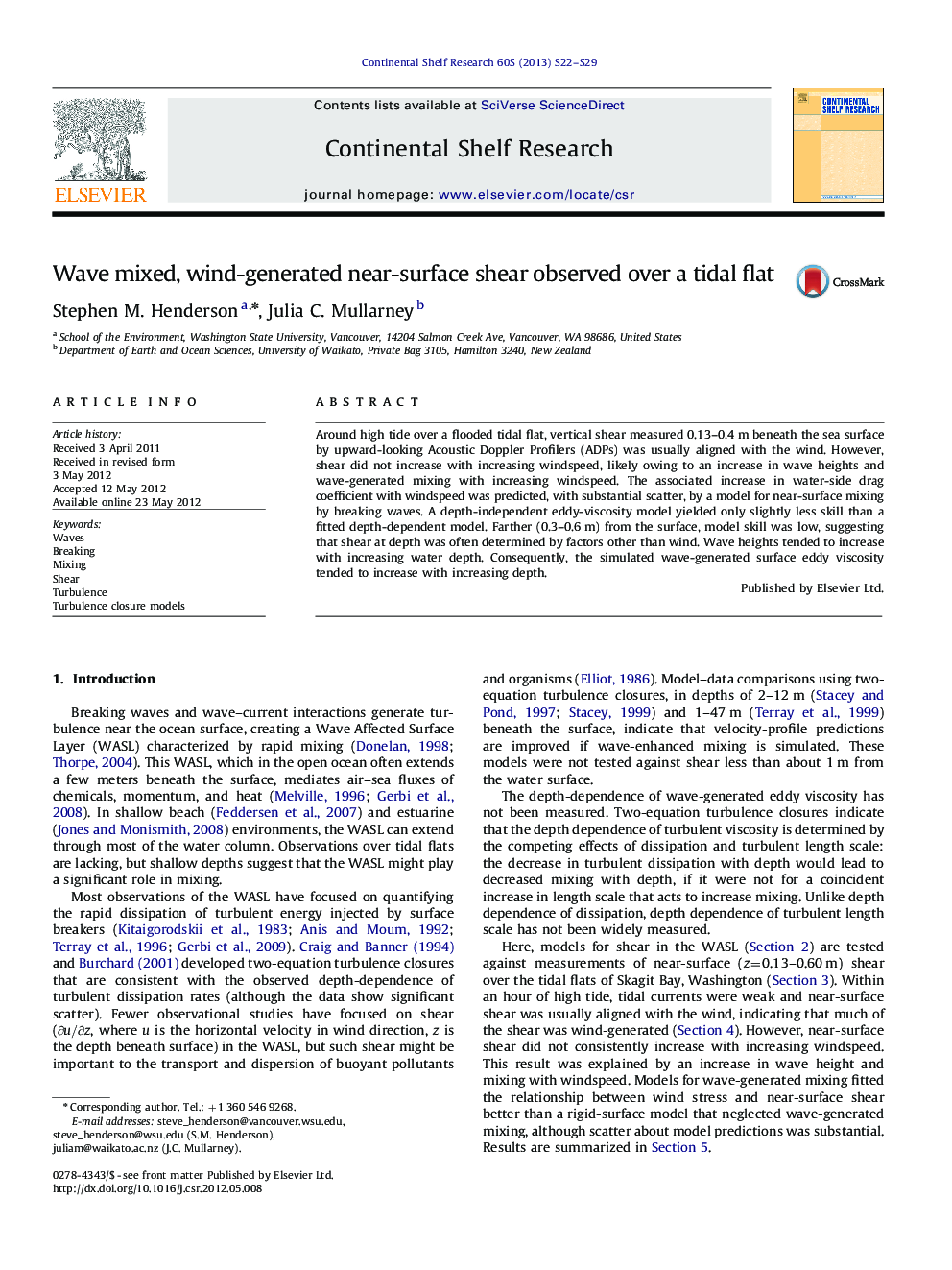| Article ID | Journal | Published Year | Pages | File Type |
|---|---|---|---|---|
| 4532155 | Continental Shelf Research | 2013 | 8 Pages |
Around high tide over a flooded tidal flat, vertical shear measured 0.13–0.4 m beneath the sea surface by upward-looking Acoustic Doppler Profilers (ADPs) was usually aligned with the wind. However, shear did not increase with increasing windspeed, likely owing to an increase in wave heights and wave-generated mixing with increasing windspeed. The associated increase in water-side drag coefficient with windspeed was predicted, with substantial scatter, by a model for near-surface mixing by breaking waves. A depth-independent eddy-viscosity model yielded only slightly less skill than a fitted depth-dependent model. Farther (0.3–0.6 m) from the surface, model skill was low, suggesting that shear at depth was often determined by factors other than wind. Wave heights tended to increase with increasing water depth. Consequently, the simulated wave-generated surface eddy viscosity tended to increase with increasing depth.
► Shear was measured just beneath the sea surface over a flooded tidal flat. ► Shear tended to be aligned with the wind. ► Shear magnitude did not consistently increase with windspeed. ► Waves tended to be large when winds were large. ► Modeled wave-generated mixing explains the observed lack of any increase in shear with windspeed.
